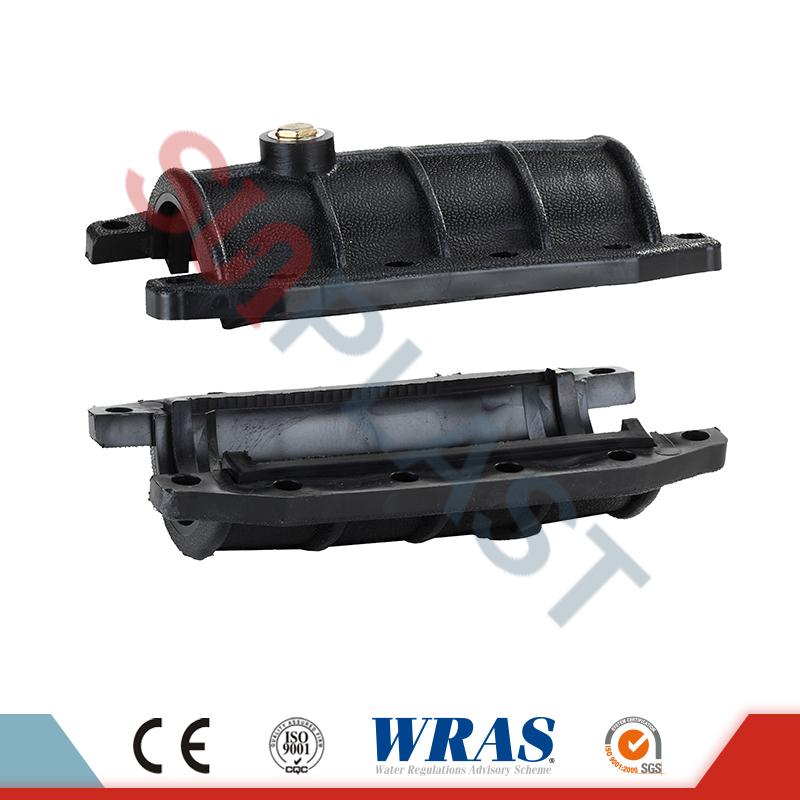Information about HDPE Repair Saddles
2024-07-27
An HDPE (High-Density Polyethylene) repair saddle is a specialized fitting used for repairing and reinforcing damaged sections of HDPE pipes. These saddles are particularly useful in applications involving water, gas, and other fluid transportation systems. Here is a detailed overview of HDPE repair saddles:
Key Features:
1. Material: Made from high-density polyethylene, which offers excellent chemical resistance, durability, and flexibility.
2. Design: Typically consists of a saddle-shaped piece that fits over the damaged section of the pipe, along with a clamping mechanism to secure it in place.
3. Pressure Rating: Designed to withstand the pressure ratings of the pipes they are used with, ensuring a secure and reliable repair.
4. Seal Integrity: Often includes a gasket or sealing element to ensure a watertight or gas-tight seal over the damaged area.
Applications:
1. Water Supply Systems: Used to repair leaks and breaks in water distribution pipelines.
2. Gas Distribution: Suitable for repairing HDPE gas pipelines.
3. Irrigation Systems: Ideal for fixing damaged pipes in agricultural irrigation setups.
4. Industrial Pipelines: Used in various industrial fluid transport systems where HDPE pipes are used.
Benefits:
1. Cost-Effective: Provides a quick and economical solution for repairing damaged pipes without the need for extensive pipe replacement.
2. Easy Installation: Designed for easy and quick installation, often without the need for specialized tools or equipment.
3. Durability: Made from durable HDPE material, which is resistant to corrosion, chemicals, and environmental stress.
4. Minimal Downtime: Allows for fast repairs, minimizing the downtime of the affected pipeline system.
Installation Process:
1. Identify the Damage: Locate the damaged section of the HDPE pipe that needs repair.
2. Clean the Area: Clean the surface of the pipe around the damaged area to ensure a proper fit and seal.
3. Position the Saddle: Place the repair saddle over the damaged section, ensuring it covers the damaged area completely.
4. Secure the Saddle: Use the clamping mechanism to secure the saddle tightly to the pipe. Ensure that the sealing gasket (if included) is properly positioned to create a watertight or gas-tight seal.
5. Pressure Test: Once installed, conduct a pressure test to ensure that the repair is secure and there are no leaks.
Maintenance and Inspection:
- Regular Inspections: Periodically inspect the repaired section to ensure the integrity of the repair saddle and check for any signs of leaks or further damage.
- Gasket Replacement: If the repair saddle includes a gasket, ensure it is in good condition and replace it if necessary to maintain a proper seal.
- Environmental Considerations: Ensure the saddle is suitable for the environmental conditions, such as exposure to UV light or chemicals, which may affect its durability.
Considerations for Selection:
- Pipe Size and Compatibility: Ensure the repair saddle is compatible with the diameter and type of HDPE pipe being repaired.
- Pressure Rating: Verify that the saddle is rated for the pressure of the pipeline system.
- Environmental Conditions: Consider the operating environment, including temperature and exposure to chemicals, to choose a suitable repair saddle.
HDPE repair saddles are a versatile and reliable solution for fixing damaged HDPE pipelines. They offer a practical way to restore the integrity of the pipeline system quickly and efficiently.



